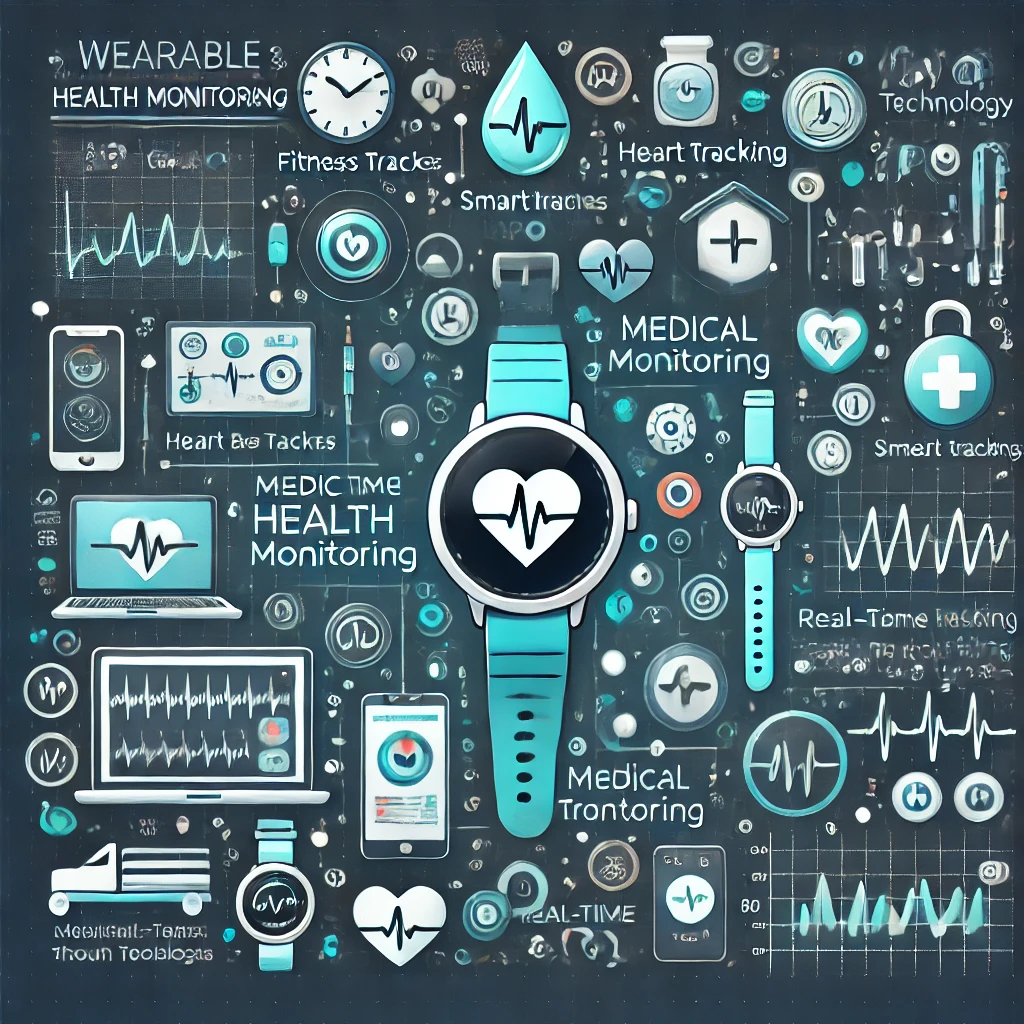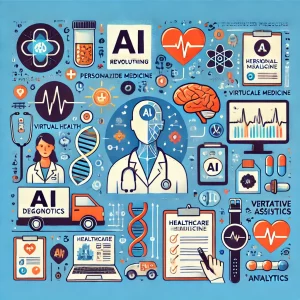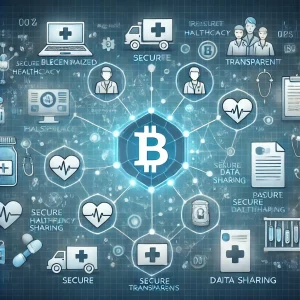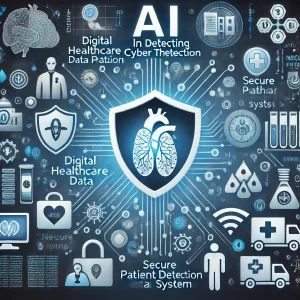How Wearable Technology is Improving Health Monitoring

Wearable technology has become an integral part of modern healthcare, providing individuals and healthcare providers with real-time data on vital signs, activity levels, and overall health. Devices like fitness trackers, smartwatches, and medical wearables are revolutionizing the way health is monitored, offering new insights into patient well-being and enabling preventive care. By integrating sensors, data analytics, and wireless connectivity, wearable technology is transforming health monitoring and improving patient outcomes.
In this article, we will explore how wearable technology is enhancing health monitoring, its key benefits, popular applications, and the challenges associated with its widespread adoption.
The Rise of Wearable Technology in Healthcare
Wearable technology, commonly referred to as “wearables,” includes devices equipped with sensors that collect and transmit health-related data. These devices range from consumer-grade fitness trackers to advanced medical wearables designed to monitor chronic conditions. As technology has advanced, wearables have become more sophisticated, providing users with detailed information about their health that was previously only available through medical consultations.
Some popular examples of wearable devices include:
- Smartwatches: Devices like the Apple Watch and Fitbit can track heart rate, activity levels, sleep patterns, and even detect irregular heart rhythms.
- Fitness Trackers: Devices like Garmin and WHOOP focus on fitness metrics, including steps taken, calories burned, and workout intensity.
- Medical Wearables: Devices like continuous glucose monitors (CGMs) and blood pressure monitors provide real-time data for managing chronic conditions such as diabetes and hypertension.
These wearables empower individuals to take control of their health while also enabling healthcare providers to deliver more personalized care based on real-time data.
Key Applications of Wearable Technology in Health Monitoring
1. Monitoring Vital Signs
Wearable devices are increasingly being used to monitor vital signs such as heart rate, blood pressure, oxygen saturation, and respiratory rate. This continuous monitoring allows individuals to track their health over time and detect early signs of abnormalities. For example, smartwatches can monitor heart rate throughout the day and alert users if their heart rate exceeds or falls below normal ranges.
In cases of chronic illness, wearables can provide critical data to healthcare providers. For instance, people with heart conditions can wear devices that monitor heart rhythms and detect arrhythmias. This data can then be shared with physicians for remote monitoring, enabling early intervention and reducing the risk of severe cardiac events.
2. Tracking Physical Activity and Fitness
One of the earliest and most popular applications of wearable technology is in tracking physical activity. Fitness trackers and smartwatches can measure daily steps, distance traveled, calories burned, and workout intensity. This data is invaluable for individuals looking to stay active and meet fitness goals.
In addition to tracking everyday activity, wearables are also being used by athletes and fitness enthusiasts to optimize their training routines. By analyzing data such as heart rate variability (HRV), recovery time, and sleep patterns, wearables can provide personalized insights into how the body responds to exercise and how to improve performance.
3. Sleep Monitoring
Sleep plays a crucial role in overall health, and wearable devices are becoming increasingly sophisticated in monitoring sleep patterns. Devices like Fitbit, Oura Ring, and WHOOP can track sleep stages, such as deep sleep, light sleep, and REM, to provide users with a detailed analysis of their sleep quality.
Poor sleep can be an indicator of underlying health conditions, such as sleep apnea or stress. By tracking sleep data, individuals can identify patterns that may be affecting their rest and take action to improve their sleep hygiene. Healthcare providers can also use this data to diagnose and manage sleep-related disorders.
4. Managing Chronic Conditions
One of the most promising uses of wearable technology is in managing chronic conditions like diabetes, hypertension, and respiratory illnesses. Medical-grade wearables, such as continuous glucose monitors (CGMs) and blood pressure cuffs, provide real-time data that helps patients manage their conditions more effectively.
For example, CGMs allow people with diabetes to monitor their blood glucose levels throughout the day without needing to prick their fingers. This continuous monitoring helps patients maintain better control of their blood sugar levels and reduces the risk of complications.
Similarly, wearable blood pressure monitors enable individuals with hypertension to track their blood pressure at home. This data can be shared with healthcare providers to adjust treatment plans, leading to better management of the condition and fewer hospital visits.
5. Remote Patient Monitoring
The rise of telemedicine has accelerated the adoption of remote patient monitoring (RPM) systems, and wearable technology plays a key role in these systems. RPM enables healthcare providers to monitor patients’ health remotely, allowing for timely interventions and reducing the need for in-person visits.
For example, a patient recovering from surgery can wear a device that tracks vital signs and sends the data to their physician. If the data indicates a potential issue, such as an elevated heart rate or low oxygen levels, the healthcare provider can contact the patient and recommend appropriate actions. This approach improves patient outcomes while reducing the burden on healthcare facilities.
6. Fall Detection and Emergency Response
Wearable devices equipped with accelerometers and gyroscopes can detect sudden movements, such as falls, and automatically alert emergency services or caregivers. This feature is particularly valuable for older adults or individuals with mobility challenges who are at a higher risk of falling.
Devices like the Apple Watch and certain medical alert systems come with built-in fall detection, providing peace of mind for both the wearer and their loved ones. In the event of a fall, the device can send an emergency alert with the user’s location, ensuring a quick response.
Benefits of Wearable Technology in Health Monitoring
The integration of wearable technology into healthcare offers numerous benefits, including:
1. Continuous Monitoring
Wearables provide continuous monitoring of health metrics, allowing for real-time insights into a person’s health status. This continuous data collection can detect changes in vital signs or behaviors that may indicate health issues, enabling early intervention and preventing complications.
2. Empowering Patients
Wearables empower individuals to take control of their own health. By providing easy access to health data, wearables encourage users to engage in healthier behaviors, such as increasing physical activity, improving sleep quality, or managing chronic conditions more effectively.
3. Personalized Healthcare
Wearables generate vast amounts of personalized data, enabling healthcare providers to tailor treatment plans based on an individual’s unique health profile. Personalized healthcare improves the accuracy of diagnoses and treatments, leading to better outcomes for patients.
4. Early Detection of Health Issues
Wearable technology can detect early signs of health problems before symptoms become severe. For example, a sudden increase in heart rate or a drop in blood oxygen levels could be an early sign of illness, allowing individuals to seek medical attention before their condition worsens.
5. Enhanced Remote Care
Wearables support the growth of telemedicine and remote care by providing healthcare providers with real-time data on their patients’ health. This allows for continuous monitoring and reduces the need for in-person visits, especially for patients with chronic conditions or those recovering from surgery.
Challenges and Limitations of Wearable Technology
While wearable technology offers numerous benefits, there are also challenges and limitations that need to be addressed:
1. Data Privacy and Security
Wearable devices collect sensitive health data, raising concerns about privacy and security. Ensuring that this data is encrypted and protected from unauthorized access is critical to maintaining user trust and complying with regulations like the Health Insurance Portability and Accountability Act (HIPAA).
2. Accuracy and Reliability
The accuracy of wearable devices can vary, particularly when it comes to medical-grade measurements. While consumer-grade wearables like fitness trackers are useful for general health monitoring, they may not be as reliable as medical devices for diagnosing conditions or guiding treatment decisions.
3. Cost and Accessibility
High-quality wearables, particularly medical-grade devices, can be expensive, making them inaccessible to some individuals. While prices are expected to decrease as technology advances, cost remains a barrier for widespread adoption in certain populations.
4. Integration with Healthcare Systems
For wearable data to be useful in clinical settings, it needs to be seamlessly integrated into healthcare systems. Many healthcare providers face challenges in integrating wearable data with electronic health records (EHRs) and ensuring that the data is actionable and useful in guiding treatment decisions.
The Future of Wearable Technology in Health Monitoring
As wearable technology continues to evolve, its role in health monitoring is expected to expand. Future developments may include more advanced sensors capable of monitoring additional health metrics, such as hydration levels, stress markers, and mental health indicators. AI and machine learning algorithms will also play a larger role in analyzing wearable data, providing deeper insights into individual health patterns and predicting potential health issues before they occur.
Wearable technology is also likely to become more integrated into personalized healthcare, with devices offering tailored recommendations based on real-time data and predictive analytics. As technology becomes more accessible and accurate, wearables will play a critical role in preventive care, chronic disease management, and improving overall health outcomes.
Conclusion
Wearable technology is revolutionizing the way we monitor health, providing individuals and healthcare providers with real-time data that enhances preventive care, chronic disease management, and overall well-being. From tracking vital signs and sleep patterns to enabling remote patient monitoring, wearables offer a range of applications that improve healthcare outcomes. While challenges such as data privacy and integration with healthcare systems remain, the future of wearable technology in health monitoring is promising, with the potential to transform how we manage and monitor health on a daily basis.







